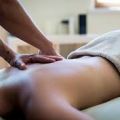How to Prevent Varicose Veins And Their Complications

Preventing varicose veins of the lower extremities takes a whole range of measures to prevent the development of varicose veins and its complications. Like most diseases, varicose veins are easier to prevent than to treat. First, the prevention of this disease is relevant for two groups of people – those at risk for vascular diseases to prevent the development of varicose veins and those who have already been diagnosed with varicose veins to avoid the development and complications of the disease.
Experts note that varicose veins develop as a result of a violation of several body functions., the prevention and vein treatment involve comprehensive measures that affect many areas of life – work and rest, nutrition, clothing and footwear, and others.
Measures to prevent diseases of the veins of the lower extremities include:
- Wearing compression stockings. Compression therapy is one of the most highly effective ways to prevent varicose veins and its consequences. At the moment, there is a huge selection of compression stockings: for women and men, for wearing during pregnancy, for childbirth and the postpartum period, winter and summer models, etc. The therapeutic effect of compression hosiery is created due to the difference in the pressure force of the hosiery on different parts of the leg. The maximum is at the ankle level and gradually decreasing towards the middle of the thigh. This decrease in pressure from the ankle to the thigh determines the ability of knitwear to "push" blood from the veins to the heart. A doctor should choose compression stockings that will be perfect for your condition.
- Medical prevention. To strengthen the blood vessel walls, the phlebologist individually selects a certain type of venotonics and phlebo protectors, which are recommended to be used according to the scheme proposed by the doctor.
- Proper nutrition. A good prevention of the development of varicose veins and its consequences is the inclusion of foods high in fiber (vegetables, fruits, wholemeal bread) and vegetable fats. This will help to avoid the problem of excess weight, as well as improve venous blood flow.
- Compliance with the regime of work and rest. If your work is associated with long-term static loads on the legs (prolonged sitting, standing), unloading the legs every hour is recommended. Walk for 5 minutes and do special exercises –– rise up 10-15 times, lifting your heels off the floor. Also, give up the habit of sitting cross-legged. While resting, try to lie down with your legs elevated.
- Proper selection of clothes and shoes. Wear clothes that fit, avoid tight pants, tights, and socks. Shoes should not be too tight and have a small heel.
- Means of holistic medicine. There are many methods of treatment and prevention of varicose veins with the help of infusions and decoctions of various herbs, honey, and garlic. If you have no contraindications, then the use of such therapy can give good results.
- Hygienic procedures. The skin of the legs (especially the interdigital spaces) must be kept clean, as even minor damage can provoke the development of phlebitis. A contrast shower, taken 2-3 times throughout the day, is also useful for the legs.
- Physical activity. Walk more, do physical therapy. Good prevention of varicose veins are sports such as swimming, cycling, aerobics, and jogging.
- Weight control. Watch your weight, excess fat mass creates an additional stress on the vessels, provoking their diseases.
- Reduce the impact of negative lifestyle factors. Try to reduce the number of stays in places that require a long static load on the legs. In particular, these are long trips by car and air travel. During such trips, try to stretch your legs more often, drink plenty of fluids, use compression stockings and comfortable shoes.
By following these recommendations, you can successfully avoid both the development of varicose veins and its consequences - pain and swelling of the legs, the formation of blood clots, and trophic ulcers.
Other articles and publications:
Articles and publications of other companies:
- +1 (646) 270-9836
- Long Island City
- grantny.com













